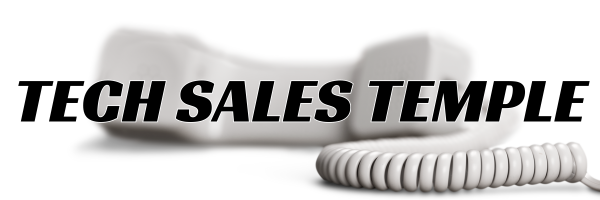
Seat-based pricing has long been the foundation of software-as-a-service (SaaS) business models. It’s a simple, predictable structure that assigns a cost per user or “seat” per month. But with the rapid rise of AI and other changing market dynamics, alternative pricing models like consumption-based pricing are gaining traction, creating a landscape of opportunities and challenges for SaaS companies.
If you’re a SaaS founder, sales professional, or tech enthusiast navigating the world of pricing models, this guide will break down:
- What seat-based pricing is and why it’s been so popular.
- The key differences between seat-based pricing and consumption-based pricing.
- The pros and cons of both models.
- Insights into which pricing structure might work best for your SaaS business.
Let’s start by dissecting the basics of seat-based pricing.
What is Seat-Based Pricing?
Seat-based pricing charges customers a fixed fee per user per month. For example, if your software costs $20 per seat and your customer has 10 employees using the service, they pay $200 each month.
Why Seat-Based Pricing Became the Standard
The simplicity and predictability of seat-based pricing made it a dominant choice for many SaaS companies. Here’s why founders and sales teams found it appealing:
- Scalability: Charging per user aligns the cost with the size of the customer’s team.
- Predictable Revenue: Because the cost is fixed, revenue streams are steady and easy to forecast. This is crucial for business planning and investor confidence.
- Easy to Understand: Customers know exactly how much they’ll pay each month without the need for complex calculations.
However, while it has clear benefits, seat-based pricing isn’t without its challenges. One major drawback is that customers pay the same fee regardless of how much or how little they actually use the software.
When Seat-Based Pricing Falls Short
Though predictable, seat-based pricing sometimes leaves gaps:
- Churn from Low Utilization
Users who are paying but not fully utilizing the service may feel it’s not worth the cost and are likely to cancel their subscription.
- Revenue Capping
There’s a natural ceiling to revenue with seat-based pricing, as it’s directly tied to the number of users. Even if your software delivers immense value, the pricing model limits overall earnings unless the customer expands their user base.
- Misalignment of Value
A fixed per-user fee doesn’t always align with how much value the customer derives from the software. For instance, one company may aggressively use the software across multiple teams while another uses it sparingly — but they pay the same per user.
This misalignment and the rise of advancements like AI have paved the way for other models, particularly consumption-based pricing.
Enter Consumption-Based Pricing
Unlike seat-based pricing, consumption-based pricing charges customers based on their actual usage of the product. For example, instead of paying a fixed $20 per month per user, customers might pay $0.02 per API call, $5 per GB of data used, or $0.10 per transaction processed.
This model is becoming more prevalent across SaaS companies leveraging AI, cloud computing, and other technologies where usage can vary significantly.
Key Differences Between Seat-Based and Consumption-Based Pricing
| Feature | Seat-Based Pricing | Consumption-Based Pricing |
|---|---|---|
| Cost Basis | Per user/per seat | Per unit of usage (e.g., transactions, data, credits) |
| Revenue Predictability | Highly predictable | Variable, based on customer usage |
| Customer Alignment | Not tied to actual usage | Directly linked to value derived |
| Growth Potential | Capped by user count | Unlimited as usage grows |
| Churn Risk | High for low-utilization customers | Reduced, as customers only pay for what they use |
Why the Rise of Consumption-Based Pricing?
The emergence of consumption-based pricing is driven by several factors, particularly within the AI and tech industries:
- AI’s Demand for Flexibility
Many AI-driven tools operate in dynamic environments where usage fluctuates. Consumption-based pricing accommodates these changing needs better than a fixed per-user fee.
- Value Alignment
Customers feel they’re getting their money’s worth because they pay in direct proportion to their usage and benefits.
- No Revenue Ceiling
For SaaS companies, this model offers the potential for exponential revenue growth as customer usage increases.
Despite its advantages, consumption-based pricing isn’t without complexities.
Pros and Cons of Each Pricing Model
Seat-Based Pricing
Pros:
- Simple, easy to communicate to customers.
- Predictable revenue enables better financial planning.
- Works well for products with static, team-wide usage.
Cons:
- May ignore customer satisfaction if usage is low.
- Limits earning potential based on user count.
- Can lead to customer churn for low-utilization customers.
Consumption-Based Pricing
Pros:
- Matches customer spend with actual product value.
- Reduces churn from low-usage customers.
- Can grow revenue quickly with increased adoption and usage.
Cons:
- Revenue can be unpredictable, making financial forecasting challenging.
- Customers may prefer predictable costs and hesitate to commit to variable rates.
- Pricing can be harder to explain and may require sophisticated tracking tools.
Finding the Right Pricing Model for Your SaaS Business
Choosing between seat-based or consumption-based pricing depends on your product, customer use cases, and business goals. Here’s a simplified decision framework:
- Choose Seat-Based Pricing If…
Your software is used uniformly across teams (e.g., CRM systems) and you value predictable revenue and simplicity.
- Choose Consumption-Based Pricing If…
Your software’s usage varies widely across customers (e.g., cloud computing platforms) or you want to align your pricing with the value customers receive.
For some SaaS companies, a hybrid approach works best. For example, charging a base monthly fee per seat but layering usage-based fees for premium or high-volume features.
The Future of SaaS Pricing Models
With the rapid evolution of SaaS products and the increasing role of AI, pricing strategies will continue to adapt. While seat-based pricing offers reliability, the shift toward consumption-based pricing reflects a growing emphasis on customer-centric value and scalability.
What SaaS Sellers Can Do
To stay competitive and meet customer demands, here are actionable steps:
- Research & Test Pricing Models
Run A/B tests or pilot programs to find the structure that resonates best with your customers.
- Invest in Analytics
Accurate data is key for consumption-based pricing. Use analytics tools to measure usage and align pricing accordingly.
- Educate Your Sales Teams
Ensure your sales and account executives can clearly articulate the benefits of your chosen model. Transparency around pricing builds trust.
- Focus on Customer Success
Regardless of your pricing structure, retaining customers requires ensuring they derive continuous value from your product.
By adapting to changing market needs and aligning pricing models with customer expectations, SaaS founders have the opportunity to drive growth and solidify their competitive advantage.
